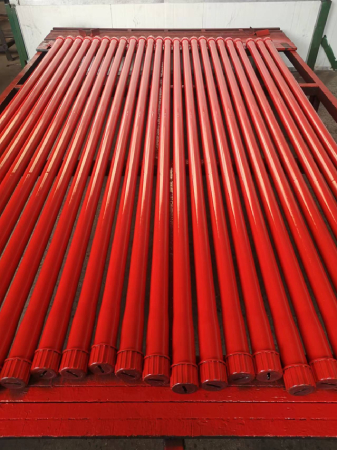- Afrikaans
- Albanian
- Amharic
- Arabic
- Armenian
- Azerbaijani
- Basque
- Belarusian
- Bengali
- Bosnian
- Bulgarian
- Catalan
- Cebuano
- Corsican
- Croatian
- Czech
- Danish
- Dutch
- English
- Esperanto
- Estonian
- Finnish
- French
- Frisian
- Galician
- Georgian
- German
- Greek
- Gujarati
- Haitian Creole
- hausa
- hawaiian
- Hebrew
- Hindi
- Miao
- Hungarian
- Icelandic
- igbo
- Indonesian
- irish
- Italian
- Japanese
- Javanese
- Kannada
- kazakh
- Khmer
- Rwandese
- Korean
- Kurdish
- Kyrgyz
- Lao
- Latin
- Latvian
- Lithuanian
- Luxembourgish
- Macedonian
- Malgashi
- Malay
- Malayalam
- Maltese
- Maori
- Marathi
- Mongolian
- Myanmar
- Nepali
- Norwegian
- Norwegian
- Occitan
- Pashto
- Persian
- Polish
- Portuguese
- Punjabi
- Romanian
- Russian
- Samoan
- Scottish Gaelic
- Serbian
- Sesotho
- Shona
- Sindhi
- Sinhala
- Slovak
- Slovenian
- Somali
- Spanish
- Sundanese
- Swahili
- Swedish
- Tagalog
- Tajik
- Tamil
- Tatar
- Telugu
- Thai
- Turkish
- Turkmen
- Ukrainian
- Urdu
- Uighur
- Uzbek
- Vietnamese
- Welsh
- Bantu
- Yiddish
- Yoruba
- Zulu
Understanding API Casing Sizes for Effective Oil and Gas Well Operations and Management Strategies
Understanding API Casing Sizes A Comprehensive Overview
In the oil and gas industry, the American Petroleum Institute (API) provides standardized guidelines that govern various specifications related to drilling equipment, including casings. API casing sizes play a crucial role in the drilling process, ensuring that the wells are both safe and efficient. This article delves into the different API casing sizes, their significance, and the standards governing them.
What is API Casing?
API casing refers to the steel pipe used in the drilling process to line the boreholes that are created during the drilling of oil and gas wells. The primary purpose of casing is to support the wellbore, prevent the collapse of the hole, and isolate the well from surrounding formations. Casing also serves as a conduit for oil and gas production, ensuring safe and efficient extraction.
API casing sizes are standardized to accommodate various well depths and formations. These sizes are critical for ensuring the structural integrity of the well and are designed to withstand high pressures and environmental stressors encountered during drilling and production.
Standardization of API Casing Sizes
The API has developed a series of specifications that detail the dimensions, material requirements, and mechanical properties of casing pipes. These specifications are categorized based on various sizes denoted by their nominal diameter and wall thickness. The most common sizes range from 4.5 inches to 20 inches in diameter, with each size serving specific functions depending on the depth and conditions of the well.
The API 5CT standard provides the guidelines for casing and tubing materials. This standard covers not only the size but also the grade of steel used in manufacturing the casings. Common grades include H-40, J-55, K-55, N-80, and L-80. The selection of the appropriate casing size and grade is determined by factors such as the geological conditions of the drilling site, the temperature and pressure expected, and the type of fluid being produced.
api casing sizes

Importance of Selecting the Right Casing Size
Choosing the correct API casing size is critical for several reasons
1. Structural Integrity The casing must be robust enough to support the well and prevent any collapse during the drilling process. If the wrong size is chosen, there is a risk of well failure, which can lead to catastrophic incidents.
2. Fluid Management An appropriately sized casing ensures efficient management of the fluids involved in the production process. It helps control the flow of oil and gas while minimizing the risk of contamination between different geological layers.
3. Safety A well-designed casing system contributes significantly to the safety of the overall drilling operation. Proper casing sizes reduce the chances of blowouts and other dangerous events that can occur in high-pressure environments.
4. Cost Efficiency While larger casing sizes may seem appealing due to their strength, they also incur higher costs. Selecting the right size tailored to specific conditions helps in optimizing costs without compromising safety and performance.
Conclusion
In conclusion, API casing sizes are crucial to the successful drilling and completion of oil and gas wells. Adhering to the API standards not only ensures the safety and efficiency of drilling operations but also enhances the overall productivity of the well. As the oil and gas industry continues to evolve, understanding the nuances of API casing specifications will remain essential for engineers and drilling professionals alike. Proper education and adherence to these standards will ultimately lead to safer and more efficient resource extraction.
-
Tubing Pup Joints: Essential Components for Oil and Gas OperationsNewsJul.10,2025
-
Pup Joints: Essential Components for Reliable Drilling OperationsNewsJul.10,2025
-
Pipe Couplings: Connecting Your World EfficientlyNewsJul.10,2025
-
Mastering Oilfield Operations with Quality Tubing and CasingNewsJul.10,2025
-
High-Quality Casing Couplings for Every NeedNewsJul.10,2025
-
Boost Your Drilling Efficiency with Premium Crossover Tools & Seating NipplesNewsJul.10,2025







